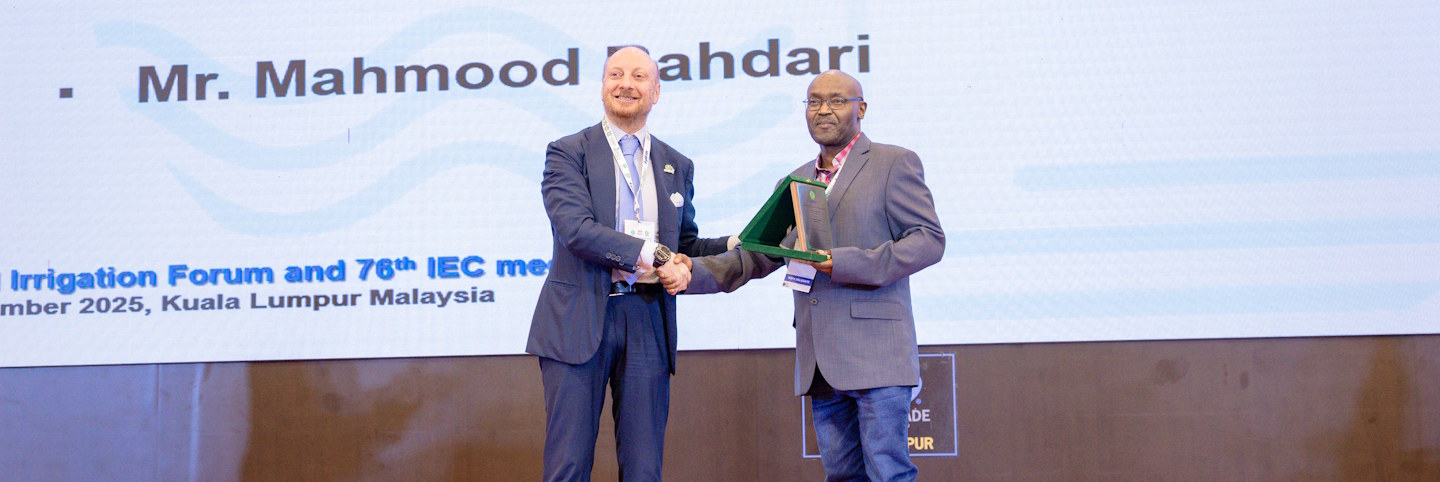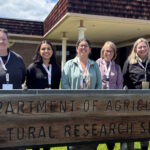
Department of Horticultural Science Wins International Award for Innovative Irrigation Decision Support System
Researchers from the Department of Horticultural Science in the Faculty of AgriSciences at Stellenbosch University recently won an international award for developing a Decision Support System (DSS) to monitor water use in subtropical fruit tree orchards. The 2025 WatSave Innovative Water Management Award was presented to Dr Sebinasi Dzikiti, a senior researcher in the department, and his team by the International Commission on Irrigation and Drainage at the 4th World Irrigation Forum, held in Kuala Lumpur, Malaysia, from 7–13 September 2025.
The DSS was developed in response to a need for a practical, user-friendly, and accurate tool for managing water resources in one of South Africa’s most water-stressed regions, the Inkomati-Usuthu Water Management Area (IUWMA). This region is a major producer of subtropical fruits such as mango, banana, litchi, and citrus, all under irrigation. Frequent droughts, climate variability, and growing competition for water have placed significant pressure on fruit producers to improve water productivity—producing more fruit with less water. The study was co-funded by the Water Research Commission (WRC) and IUWMA from October 2020 to March 2024.
The DSS was developed using 50 years of daily climate data (1960–2010) across more than 250 quaternary catchments in the IUWMA, combined with scientifically validated crop coefficients. Outputs from the DSS include orchard water use (transpiration and evapotranspiration), potential yield, water use efficiency, and irrigation requirements. Orchard water use is calculated using the internationally acclaimed FAO 56 principles, but with locally derived crop coefficients. A key innovation was the implementation of a procedure to derive crop coefficients using readily available input data, published in international peer-reviewed journals (Agricultural Water Management, Scientiae Horticulturae, and Hydrology). These accurate, site-specific crop coefficients allow farmers to schedule irrigation more precisely and make informed decisions about which tree crops to grow where, based on water requirements and estimated yields.
Currently, the DSS operates as a web-based tool for the IUWMA. Users select the approximate location of their property on the IUWMA map and navigate to their specific farm or orchard by loading the farm boundaries. The system retrieves long-term daily climate records from the nearest weather station for use in calculations. Users then input crop type, average tree height, fractional canopy cover, soil type, orchard floor vegetation status, and irrigation system to calculate crop coefficients, which are subsequently used to derive water use and crop yield. Results are presented both graphically and in tabular form as monthly summaries. Field testing was conducted using four years of experimental data collected from grapefruit, mango, litchi, and citrus orchards in a commercial farm in Malelane, IUWMA, with additional data on macadamia and citrus from prior WRC- and industry-funded projects. Wider validation of the DSS across other locations in the IUWMA is planned but requires additional resources.
“Given that this tool was developed to address the specific needs of users in the IUWMA, we are very excited to have moved this study from basic science to practice,” said Dr Dzikiti. “We are truly humbled that our work has been recognised not only locally but also internationally. While we used data from a single catchment in South Africa as a case study, the concept behind the DSS can be replicated in other locations in South Africa and beyond.”



